Abstract
Washing, freon extraction, and cationic polyelectrolyte precipitation were compared for their ability to reduce cytotoxicity associated with virus concentrates derived from beef extract eluates of wastewater sludges. Eluates concentrated by hydroextraction were usually much more toxic than those concentrated by organic flocculation. This difference may be due entirely to nondialyzable material naturally present in the beef extract which did not precipitate during flocculation at pH 3.5. Washing inoculated cell monolayers with saline containing calf serum before the addition of agar overlay media was most effective in reducing cytotoxicity, although it resulted in a greater virus loss, as compared with freon extraction and cationic polyelectrolyte precipitation.
Full text
PDF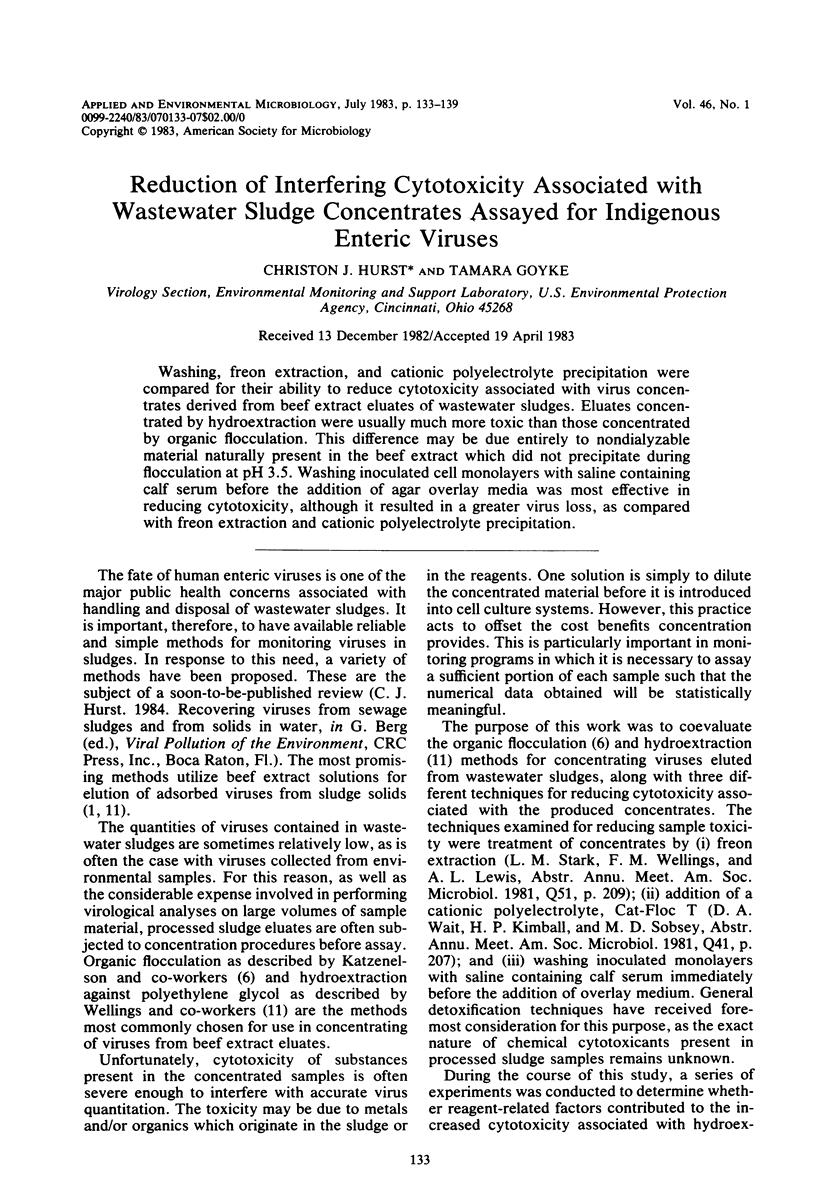
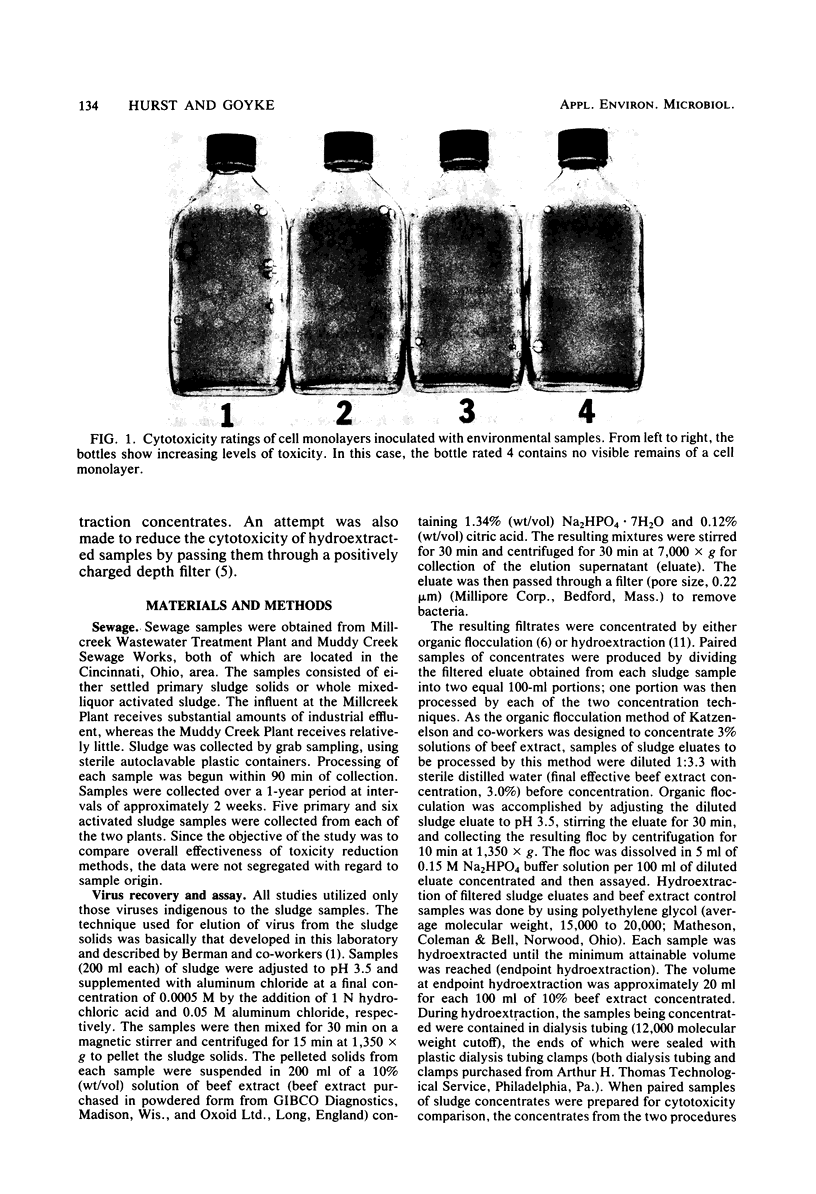
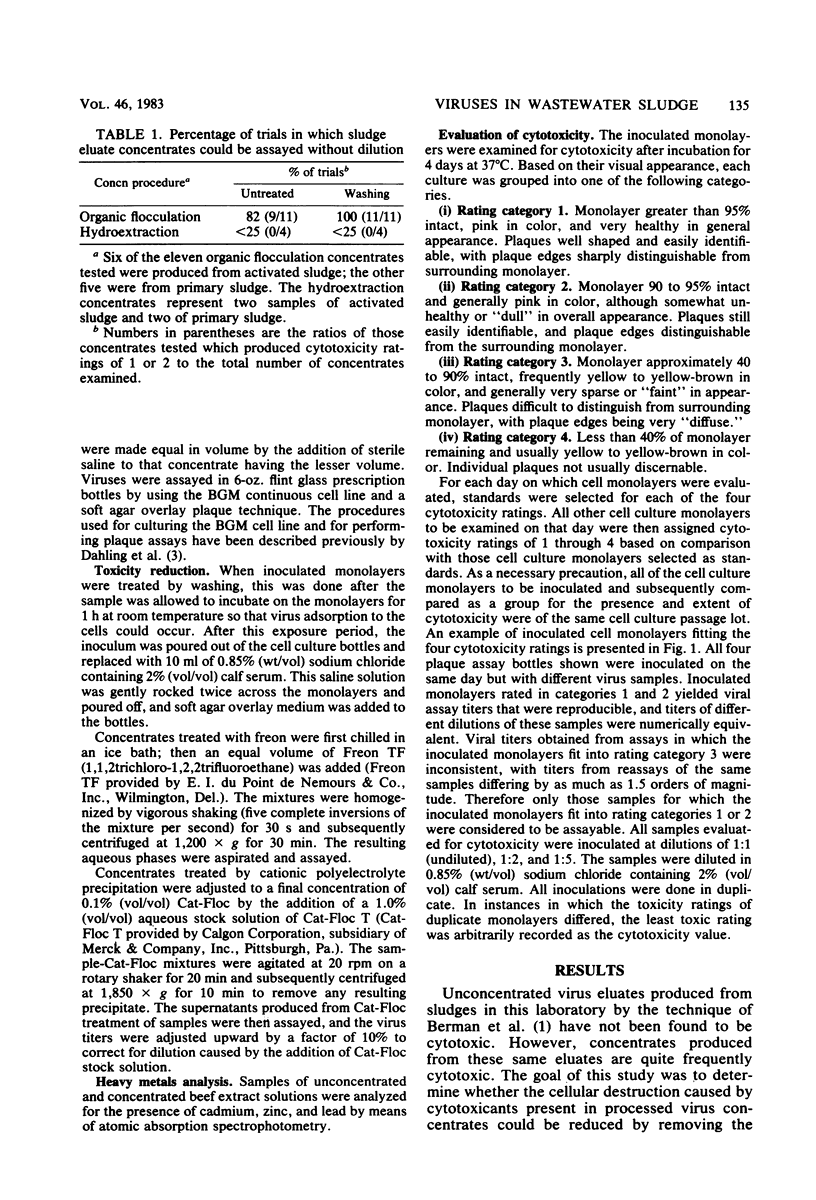
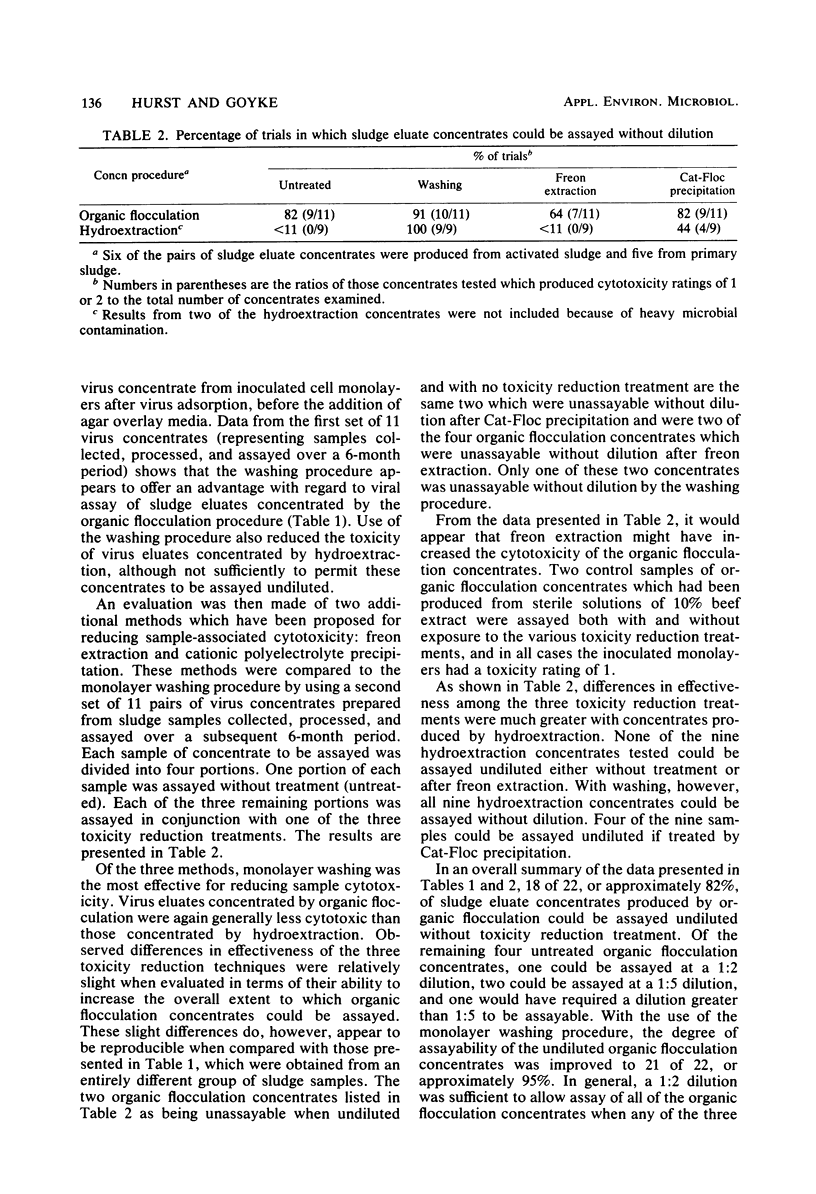
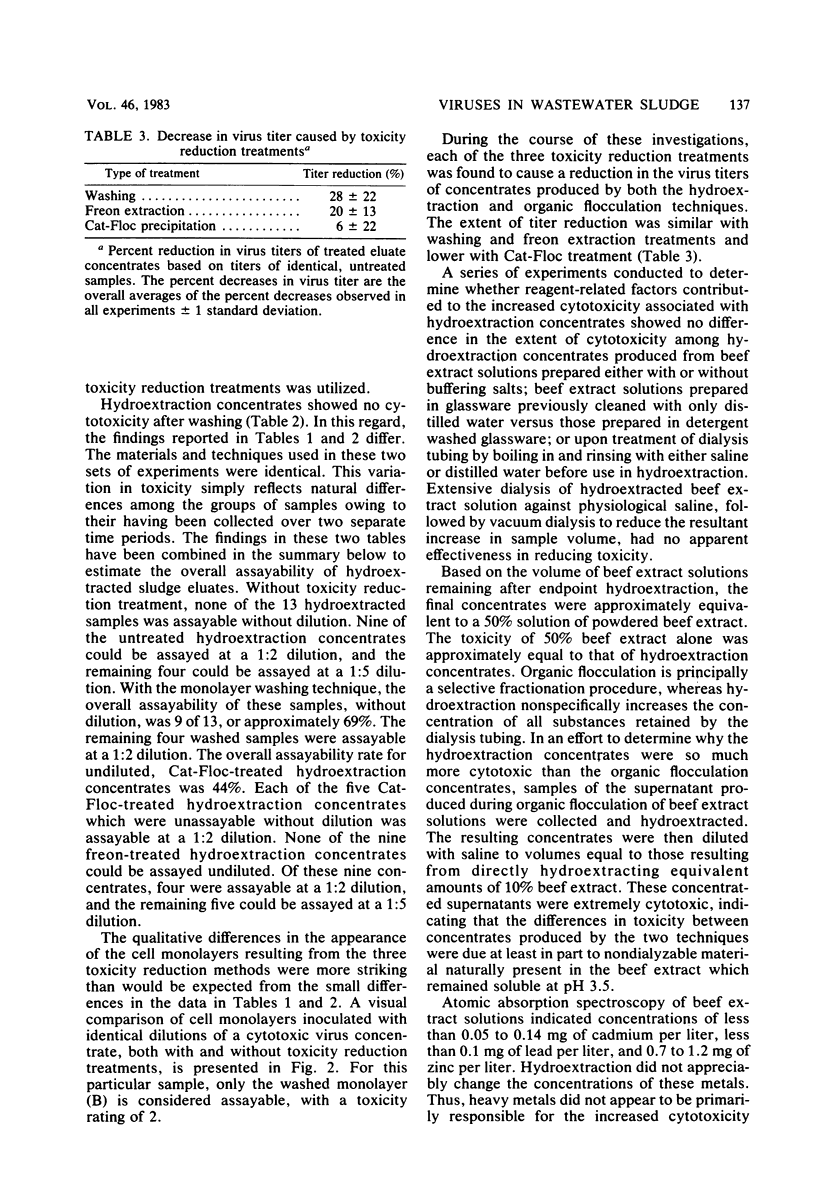
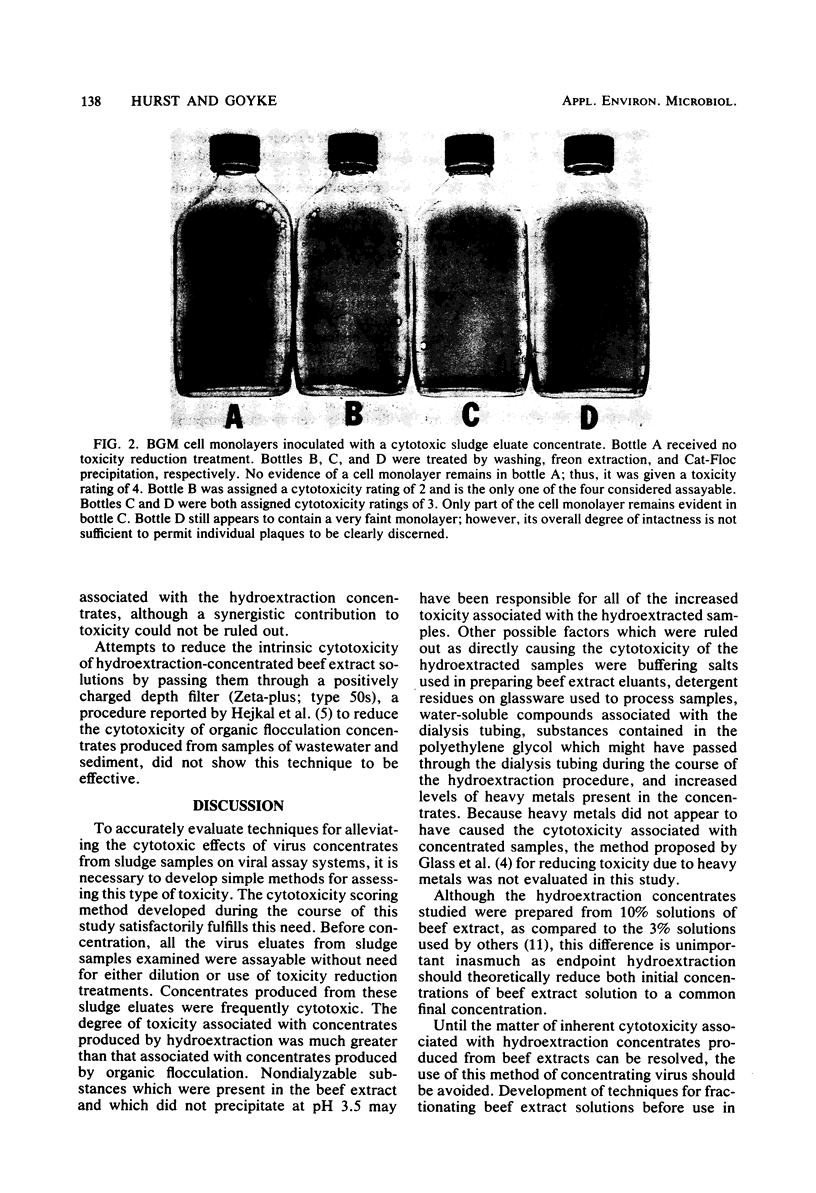
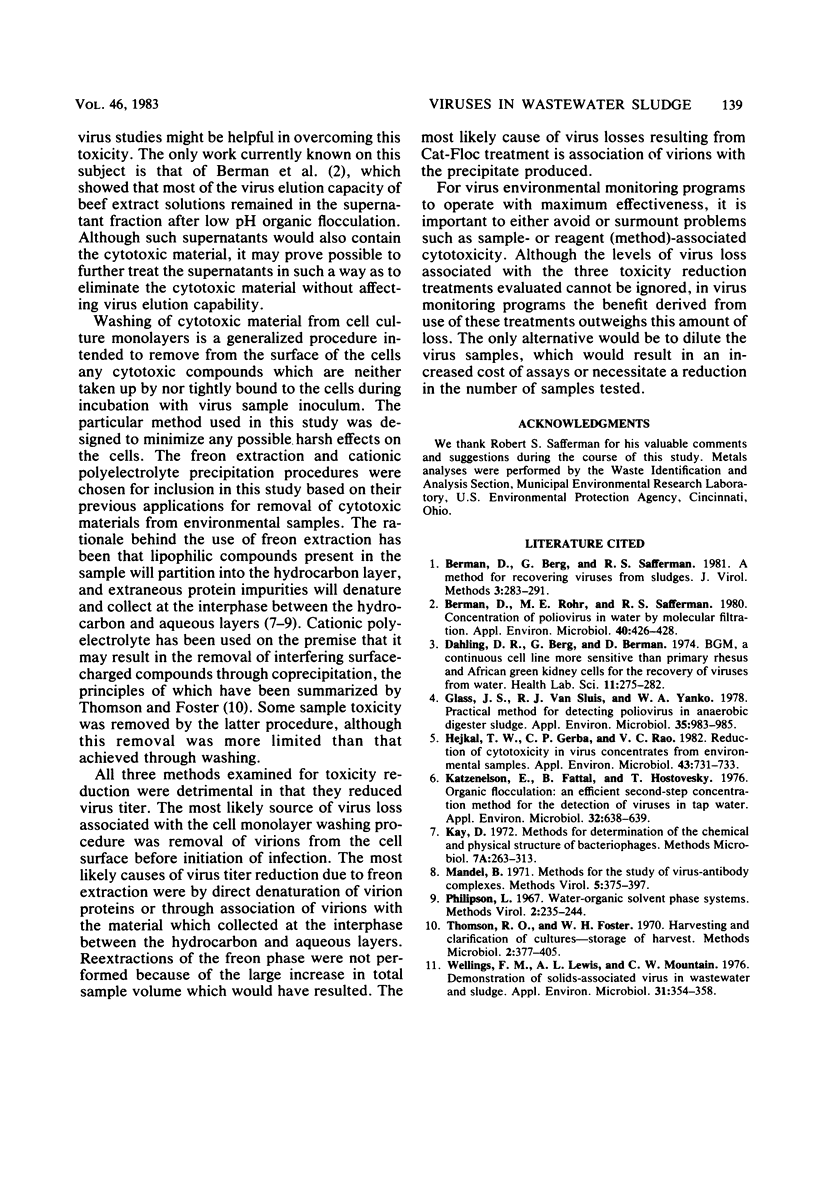
Images in this article
Selected References
These references are in PubMed. This may not be the complete list of references from this article.
- Berman D., Berg G., Safferman R. S. A method for recovering viruses from sludges. J Virol Methods. 1981 Dec;3(5):283–291. doi: 10.1016/0166-0934(81)90066-5. [DOI] [PubMed] [Google Scholar]
- Berman D., Rohr M. E., Safferman R. S. Concentration of poliovirus in water by molecular filtration. Appl Environ Microbiol. 1980 Aug;40(2):426–428. doi: 10.1128/aem.40.2.426-428.1980. [DOI] [PMC free article] [PubMed] [Google Scholar]
- Dahling D. R., Berg G., Berman D. BGM, a continuous cell line more sensitive than primary rhesus and African green kidney cells for the recovery of viruses from water. Health Lab Sci. 1974 Oct;11(4):275–282. [PubMed] [Google Scholar]
- Glass J. S., Van Sluis R. J., Yanko W. A. Practical method for detecting poliovirus in anaerobic digester sludge. Appl Environ Microbiol. 1978 May;35(5):983–985. doi: 10.1128/aem.35.5.983-985.1978. [DOI] [PMC free article] [PubMed] [Google Scholar]
- Hejkal T. W., Gerba C. P., Rao V. C. Reduction of cytotoxicity in virus concentrates from environmental samples. Appl Environ Microbiol. 1982 Mar;43(3):731–733. doi: 10.1128/aem.43.3.731-733.1982. [DOI] [PMC free article] [PubMed] [Google Scholar]
- Katzenelson E., Fattal B., Hostovesky T. Organic flocculation: an efficient second-step concentration method for the detection of viruses in tap water. Appl Environ Microbiol. 1976 Oct;32(4):638–639. doi: 10.1128/aem.32.4.638-639.1976. [DOI] [PMC free article] [PubMed] [Google Scholar]
- Wellings F. M., Lewis A. L., Mountain C. W. Demonstration of solids-associated virus in wastewater and sludge. Appl Environ Microbiol. 1976 Mar;31(3):354–358. doi: 10.1128/aem.31.3.354-358.1976. [DOI] [PMC free article] [PubMed] [Google Scholar]




